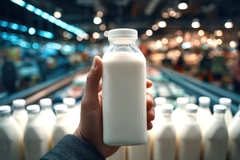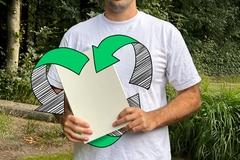Plastic packaging waste decreasing in the EU after decade-long rise
Key takeaways
- Eurostat reports EU citizens generated 79.7 million metric tons of plastic packaging waste in 2023, a decline from 2022.
- Experts attribute the decline to the impact of EU regulations like the Single-Use Plastics Directive and the PPWR, which will be binding by August 2026.
- Zero Waste Europe stresses the need to tackle paper and cardboard waste and expand reuse and refill systems.
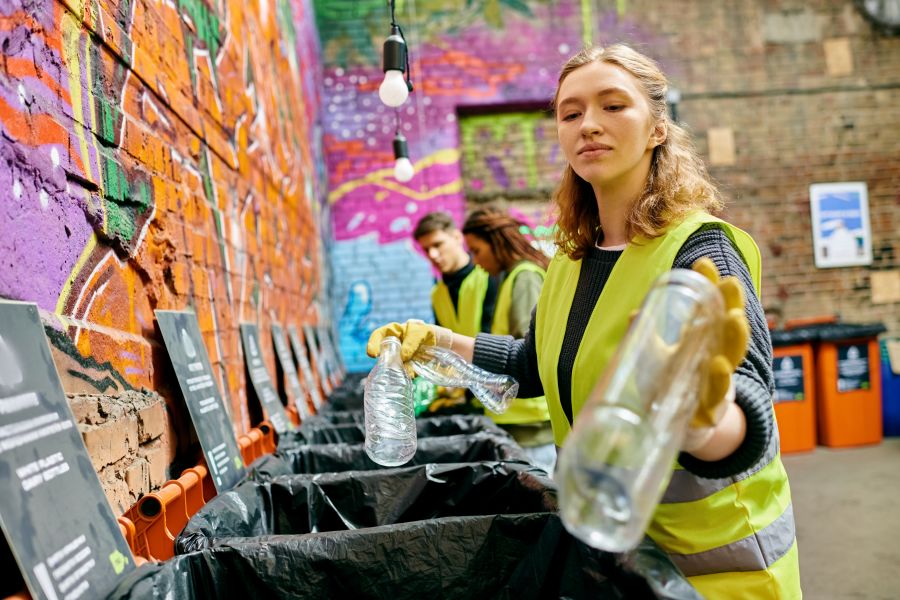
A dataset released by Eurostat has revealed that plastic packaging waste generated by EU citizens is starting to decline after a steady rise since 2013. The new data shows that in 2023, the EU created 79.7 million metric tons of plastic packaging waste, or 35.3 kg per person.
The current figure per capita represents a reduction of 8.7 kg from 2022, although it remains 21.2 kg higher than it was in 2013. The highest amount of plastic packaging waste was generated at the height of the COVID pandemic in 2021, followed by a decline in the subsequent years.
“EU policy efforts to reduce the generation of packaging waste, instead of managing such waste, are still relatively recent,” Dorota Napierska, toxic-free circular economy policy officer at Zero Waste Europe, tells Packaging Insights.
“The waste generated in 2023 marks a reduction compared to 2021 and 2022. The Single-Use Plastics Directive (SUPD) entered into force in 2019, but member states had until mid-2021 to transpose the directive into national law. SUPD targeted only a small amount of single-use plastic packaging that is in use.”
Regulations lead to waste reduction
Eurostat tells us that it cannot provide an analysis of the trends or impact of policies in the data and links to an explanation of the data set by the European Commission (EC).
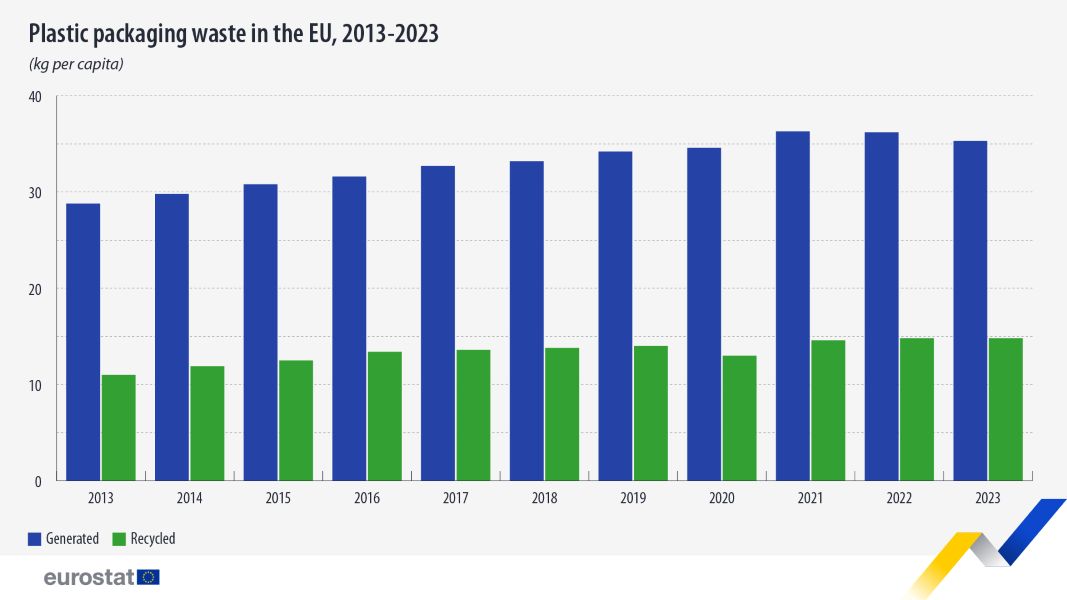 Plastic packaging waste in the EU between 2013 and 2023 (Image credit: Eurostat).The EC highlights that Article 6 of the current Packaging and Packaging Waste Directive sets out recycling targets for packaging waste: By 2030, a minimum of 55% of plastic waste should be recycled.
Plastic packaging waste in the EU between 2013 and 2023 (Image credit: Eurostat).The EC highlights that Article 6 of the current Packaging and Packaging Waste Directive sets out recycling targets for packaging waste: By 2030, a minimum of 55% of plastic waste should be recycled.
Napierska points out that the Packaging and Packaging Waste Regulation (PPWR) was only published this year, suggesting it will contribute to further reduction.
The PPWR will be binding by August 2026 and dictates that packaging companies need to play an increased role in decreasing waste by integrating a mandatory percentage of recycled content and designing for recyclability.
Napierska adds that the introduction of digital product passports in the EU will also offer “a great potential to improve overall transparency and traceability along the supply chain, including end-of-life management options.”
Concerning the implementation of reuse and refill initiatives to reduce plastic packaging waste, she suggests that “whenever they have been well planned and introduced with the necessary support from authorities and businesses, they have proved to be effective.”
“Successes of local initiatives like the setup of a reusable packaging system in Aarhus City in Denmark, the ReuSe Vanguard Project by Zero Waste Europe, and the fast growth of the trade association representing businesses dedicated to advancing refillable and reusable packaging solutions (New ERA) prove that there is an amazing potential for effective reuse and refill initiatives across the EU.”
Paper packaging waste poses a problem
Napierska asserts that the EU should do more to address other streams of packaging waste more seriously, paper- and cardboard-based packaging in particular.
“Eurostat data confirms (again and again) that out of all the packaging waste generated, the biggest waste stream in the EU is in fact paper and cardboard, which represents 40.4%, compared to 19.8% of plastic packaging waste.”
She says the “real solution” is moving toward no packaging and less individual packaging, calling overpackaging a “real problem,” and suggests using reusable packaging solutions.
“We will never achieve a truly significant cut in the generation of waste if we put all our efforts into recycling.”
National-level issues persist
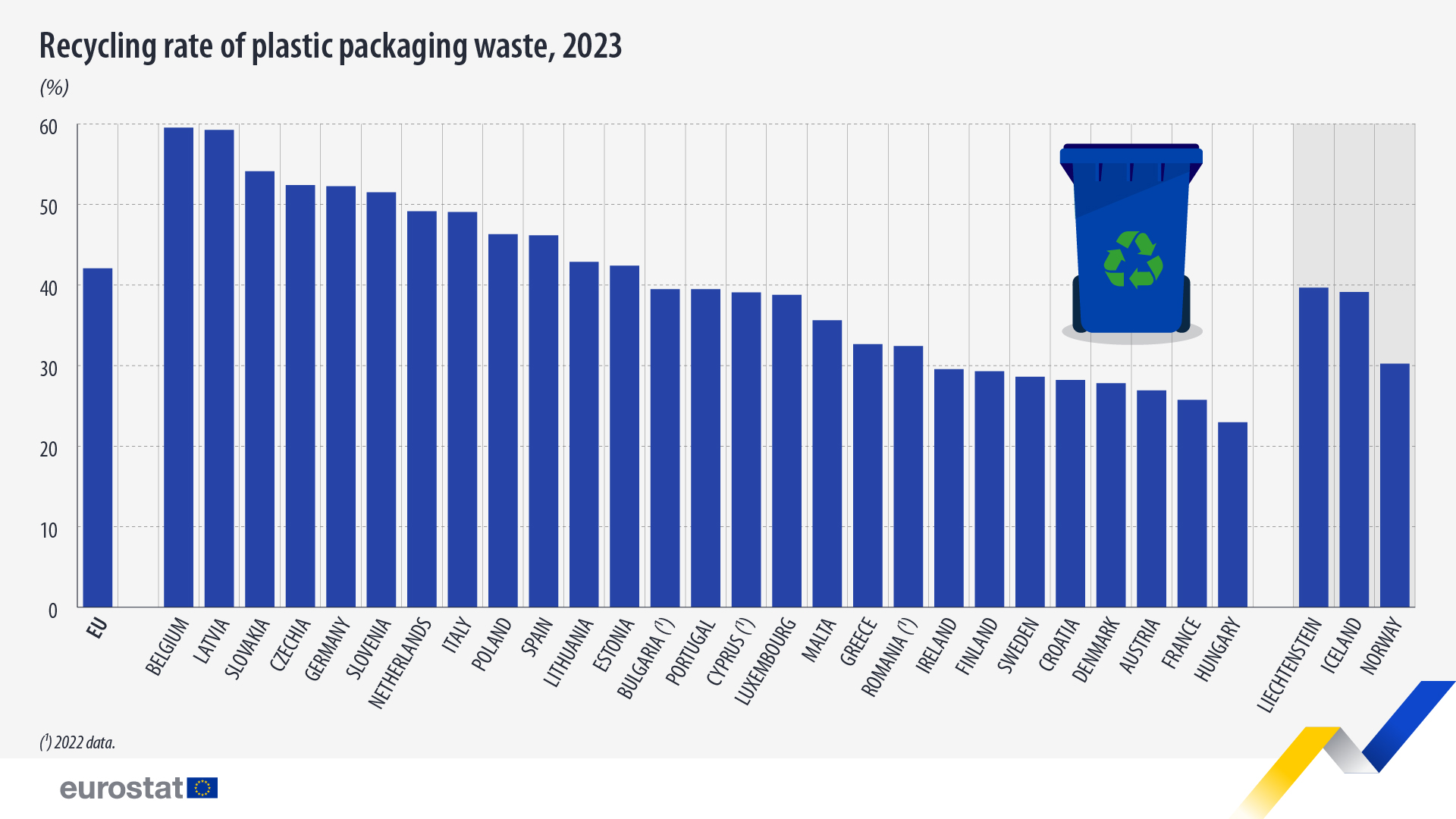 Recycling rate of plastic packaging waste in 2023 by country (Image credit: Eurostat).According to an analysis published in 2024 by Rethink, Plastic Alliance identified the EU’s leaders and laggards on phasing out single-use plastics and showed that the directive needs better implementation at the national level.
Recycling rate of plastic packaging waste in 2023 by country (Image credit: Eurostat).According to an analysis published in 2024 by Rethink, Plastic Alliance identified the EU’s leaders and laggards on phasing out single-use plastics and showed that the directive needs better implementation at the national level.
The new Eurostat data finds that Belgium recorded the highest plastic recycling rate at 59.5%, followed by Latvia (59.2%) and Slovakia (54.1%). The lowest rates were recorded in Hungary (23.0%), France (25.7%), and Austria (26.9%).
The EC analysis plastic packaging waste highlights that the average EU citizen consumed 65 lightweight plastic carrier bags in 2023. This is a drop of 30 bags per person since 2018. The most significant reductions were in Sweden (-131 bags per person), Lithuania (-125), and Latvia (-118).
In 2023, Belgium, the Netherlands, Italy, Czechia, Slovenia, Slovakia, and Spain recycled more than 70% of the packaging waste generated, which already corresponds to the 2030 target. Six more EU countries were shown to be close, with recycling rates above 65%.
“We urgently need to address, with a systemic, holistic approach, all single-use packaging, whether it is made of plastic, paper, cardboard, glass, wood, or metal. Innovation and infrastructure building must go in the direction of smart, safe, and multi-use packaging,” Napierska concludes.

